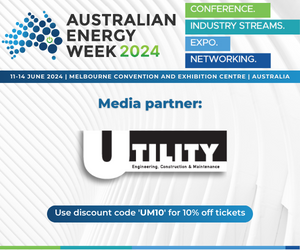Melbourne’s Water Outlook 2022, a collaborative report between Melbourne Water, Greater Western Water, South East Water and Yarra Valley Water, has been released; predicting that the state’s water levels will remain stable, thanks to the Victorian Desalination Plant.
The yearly report assesses and predicts impacts to the city’s water storages and works to secure water supplies, this year discovering that Melbourne’s water storage levels are the highest they’ve been for 20 years.
The city’s water storages are 90 per cent full, with the report also finding that without additional water from the desalination plant topping up supplies each year, Melbourne’s water storages would be around 68 per cent.
The Melbourne Water Outlook 2022 key findings are:
- The system’s total storage level is 90 per cent, which is 14.6 per cent or 263.3 billion litres higher than the same time last year
- The Victorian Desalination Plant has contributed almost 396 billion litres of desalinated water since 2017, helping Melbourne’s storages rise to the highest levels seen in 20 years
- The desalination plant provides a flexible water management approach and allows the state to continue to access drinking water, especially if reservoirs are impacted by bushfires or storms
- For the 2021–22 year, the desalination plant is delivering 125 billion litres of desalinated water of which just over 69 billion litres have been delivered to date
- Melburnians used an average of 159 litres per person, per day which is slightly above the Victorian Government’s target of 155
This boost to water storage is good news, given the rise in extreme weather events like bushfires, severe storms and the increased likelihood of extended dry conditions and drought.
Severe weather events impact water storage levels as they can fall quickly, and storms and bushfires can potentially affect water quality.
This demonstrates the need for a flexible and resilient water system, where the state can take reservoirs offline and draw on the Victorian Desalination Plant for water.
Over the past year, Melburnians’ water use has shifted as a result of working and schooling from home.
Residential usage increased slightly to an average of 159L of water per person, per day, while business use decreased by 11 per cent.
While storage levels are well placed heading into summer, Melbourne’s water corporations encourage Melburnians to keep using water wisely.
Speaking on behalf of Melbourne’s water corporations, South East Water Managing Director, Lara Olsen, said that even with high storages, Melburnians still needed to plan ahead to secure the city’s future water supplies.
“While it’s always great to see our storages looking so healthy, it’s important to remember that water storage levels are just one part of the story. The amount of water we have available depends on a range of factors including climate conditions, population growth and customer use,” Ms Olsen said.
“Demand over the long-term continues to grow, and the impact of climate change means warmer and drier days will reduce the amount of water coming into our storages.”
Melburnians are continuing to consider how much water they use, as water corporations invest in alternative water sources for the future.
“We know that Melburnians are great at saving water and making every drop count. The usage figure has crept up slightly from 157L per person, per day last year to 159L, but even with many of us working and schooling from home, Melburnians are still being conscious of the water they use,” Ms Olsen said.
“Maximising the water we use from other sources such as stormwater and recycled water also remains vital to maintaining a reliable future water supply. Water corporations continue to invest in innovative projects and technology to maximise water from other sources.”
Melbourne’s water corporations are also working together to develop the Water for Life strategy, which will impart real change during the next five years, and set a strong foundation to confidently meet diverse water needs for the next 50 years.













